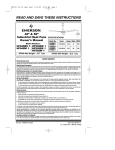Download Thermador HCSW Ventilation Hood User Manual
Transcript
CARE AND USE FOR WALL HOODS (Turn Book Over for Installation Instructions) READ AND SAVE THESE INSTRUCTIONS HTSW HCSW HDW HGSW HSW 5551 McFadden Avenue, Huntington Beach, CA 92649 • 800/735-4328 ECO 71589 • 35-05-017F • © BSH Home Appliances Corp. 1997 • Litho in Italy 10/01 IMPORTANT SAFETY INSTRUCTIONS WARNING TO REDUCE THE RISK OF FIRE, ELECTRIC SHOCK, OR INJURY TO PERSONS, OBSERVE THE FOLLOWING: 3. Clean ventilating fans frequently. Grease should not be allowed to accumulate on fan or filter. 4. Use proper pan size. Always use cookware appropriate for the size of the surface element. CAUTION FOR GENERAL VENTILATING USE ONLY. DO NOT USE TO EXHAUST HAZARDOUS OR EXPLOSIVE MATERIALS OR VAPOR. 1. Use this unit only in the manner intended by the manufacturer. If you have questions, contact the manufacturer (800/735-4328). 2. Before servicing or cleaning the unit, switch power off at service panel and lock service panel. This will prevent power from being switched on accidentally. When the service panel cannot be locked, securely fasten a prominent warning device, such as a tag to the service panel. WARNING TO REDUCE THE RISK OF A RANGE TOP GREASE FIRE. 1. Never leave surface units unattended at high settings. Boil-overs cause smoking and greasy spill-overs that may ignite. Heat oils slowly on low or medium settings. 2. Always turn hood ON when cooking on high heat or when flambéing foods. WARNING TO REDUCE THE RISK OF INJURY TO PERSONS, IN THE EVENT OF A RANGE TOP GREASE FIRE, OBSERVE THE FOLLOWING: a) SMOTHER FLAMES with a closefitting lid, cookie sheet, or other metal tray, then turn off the gas burner or the electric element. BE CAREFUL TO PREVENT BURNS. If the flames do not go out immediately, EVACUATE AND CALL THE FIRE DEPARTMENT. b) NEVER PICK UP A FLAMING PAN, you may be burned. c) DO NOT USE WATER, including wet dish cloths or towels - a violent steam explosion may result. d) Use an extinguisher ONLY if: 1) You know you have a class ABC extinguisher, and you already know how to operate it. 2) The fire is small and contained in the area where it started. 3) The fire department is being called. 4) You can fight the fire with your back to an exit. Page 2 LES INSTRUCTIONS DE SÉCURITÉ IMPORTANTES AVERTISSEMENT POUR RÉDUIRE LE RISQUE D’INCENDIE, DE CHOC ÉLECTRIQUE, OU DE LA BLESSURE AUX PERSONNES, OBSERVER LE SUIVANT: ATTENTION SEULEMENT POUR L’UTILISATION D’AÉRATION. NE PAS L’UTILISER POUR ÉPUISER LA VAPEUR OU LES MATIÈRES EXPLOSIVES OU DANGEREUSES. 1. Utiliser cet appareil seulement dans la manière destinée par le fabricant. Si vous avez des questions, contacter le fabricant (800/735-4328). 2. Avant l’entretien ou le nettoyage de l’appareil, couper le courant au tableau de service, et fermer à clef le tableau de ser vice pour empêcher l’alimentation d’être allumée par hasard. AVERTISSEMENT POUR RÉDUIRE LE RISQUE D’UN FEU DE GRAISSE DU SOMMET DE LA CUISINIÈRE: 1. Garder le ventilateur, les filtres et les surfaces chargées de la graisse propres. 2. Toujours mettre le capot EN MARCHE en cuisinant à la haute chaleur. 3. Utiliser les hauts positionnements du cuisinière sur la cuisinière seulement quand c’est nécessaire. Chauffer l’huile lentement sur un positionnement bas à moyen. 4. Ne pas laisser la cuisinière sans surveillance pendant la cuisson. 5. Utiliser toujours les batteries de cuisine et les ustensiles appropriés pour le type et la quantité de la nourriture ayant préparée. AVERTISSEMENT POUR RÉDUIRE LE RISQUE DE BLESSURE AUX PERSONNES DANS L’ÉVÉNEMENT D’UN FEU DE GRAISSE DU SOMMET DE LA CUISINIÈRE, OBSERVER LES SUIVANTS: a) ÉTOUFFER LES FLAMMES avec un couvercle ajusté, une tôle du biscuit ou un plateau métallique, puis fermer le bec. SOYEZ CERTAIN D’EMPÊCHER LES BRÛLURES. Si les flammes ne s’éteindront pas immédiatement, ÉVACUER ET APPELER LE SERVICE DES INCENDIES. b) NE JAMAIS RAMASSER UNE CASSEROLE EN FLAMMES - Vous pouvez être brûlé. c) NE PAS UTILISER DE L’EAU, y compris les torchons mouillés ou les serviettes - une explosion violente résultera. d) Utiliser un extincteur SEULEMENT si: Page 3 1) Vous savez que vous avez un extincteur de Classe ABC et vous. savez déjà comment le faire fonctionner. 2) Le feu est petit et est contenu dans la région où il a commencé. 3) Le service des incendies est appelé. 4) Vous pouvez combattre le feu avec votre dos à une sortie. CONTROL PANELS MODELS: HDW, HTSW ELECTRONIC TOUCH CONTROLS MODELS: HCSW and HSW ELECTRONIC PUSH BUTTONS A. Motor OFF button B. Motor ON button and speed selector 1, 2, 3, 1..... C. Speed 1 LED D. Speed 2 LED E. Speed 3 LED F. Intensive 4th speed LED G. Intensive 4th speed button - this speed will run for 10 minutes, and then return to previous setting, including OFF. H. Light ON, OFF button A. Motor OFF button B. ON button and motor speed selection button 1, 2, 3, 1,.... C. Speed 3 LED D. Intensive 4th Speed LED E. Speed 1 LED F. Speed 2 LED G. Intensive 4th speed ON switch - this speed will run for 10 minutes, and then return to previous setting, including OFF. H. Light OFF button I. Light ON button Grease Filter Saturation LED The flashing LED marked D reminds you when the grease filter needs to be cleaned after 40 hours use. Follow the instructions for cleaning filters in this booklet. Once the grease filters have been cleaned, reset reminder by pressing button A for about 3 seconds until you hear the signal (beep); the LED D will now stop flashing. H B C DE F G A MODELS: HGSW MECHANICAL PUSH BUTTONS A. B. C. D. E. F. Hood "ON" indicator light Light ON-OFF button Motor OFF button Motor speed button 1 (low) Motor speed button 2 (med) Motor speed button 3 (high) b. c. d. O a. Page 4 e. 1 f. 2 3 OPERATING INSTRUCTIONS - HOOD The blower should be turned on for about 5 minutes before cooking in order to establish air currents upward through the hood. Thus when heat, smoke, moisture, grease and cooking odors are produced, they will be carried outside instead of drifting into other rooms. Use the low speeds for normal use and the higher speeds for strong odors or fumes. Drafts across the range or cooktop will reduce the effectiveness of the hood. Such drafts should be prevented when possible. CLEANING INSTRUCTIONS Be sure lights are cool before cleaning the hood. To Clean Filter/s • It is recommended that the filters be washed at least once a month; they can be washed by hand or in the dishwasher. • Drain water through edge holes and let each filter dry thoroughly before replacing it. To Clean Hood Surface • For general care, wipe the outside of the stainless steel, white, black or glass hood with sudsy water or household cleaners such as Fantastic® or Formula 409®, rinse well and dry with clean soft cloth to avoid water marks. • Wipe and dry brushed stainless steel in the same direction as the grain. • Do not use abrasive products. • To remove finger prints and give added shine use spray cleaners such as Stainless Steel Magic® and Shimmer® FILTERS The metal grease filters will last forever. They are made of anodized aluminum To Remove The Metal Grease Filter/s • Disconnect electricity. the hood from for Models HSW, HCSW, HGSW • Push clips towards the center and pull the filters downward. Fig. 1. for Models HDW, HTSW • Push each handle towards the back and pull downwards Fig. 2. To Replace The Metal Grease Filter/s • Reverse procedure. LIGHTS NOTE: Disconnect the hood from electricity and be sure the lights are cool. If new lights do not operate, check fuses (see page 7 Fuses) and be sure lights are inserted correctly before calling service. Page 5 Replace Lights For Models HDW, HGSW, HCSW36/42 (Fig. 3) • Unscrew the light cover. • Remove the damaged light and replace with a new 12 Volt, 20 Watt (maximum) halogen light made for a G-4 base. Follow package directions and do not touch new light with bare hands. • Reinstall the light cover. Page 6 Fig. 7 Page 7 THERMADOR HOOD WARRANTY Length of Warranty FULL ONE YEAR WARRANTY Covers one year from date of installation, or date of occupancy on a new, or previously unoccupied dwelling. Save your dated receipt or other evidence of installation/ occupancy date. Thermador Will Pay For: All repair labor and replacement parts found to be defective due to materials and workmanship. Service must be provided by a Factory Authorized Service Agency, during normal working hours. For a Service Agency nearest you, please call 800/735-4328. Thermador Will Not Pay For: 1. 2. Service by an unauthorized agency. Damage or repairs due to service by an unauthorized agency or the use of unauthorized parts. Service visits to: • Teach you how to use the appliance. • Correct the installation. You are responsible for providing electrical wiring and other connecting facilities. • Reset circuit breakers or replace home fuses. 3. Damage caused from accident, alteration, misuse, abuse, improper installation or installation not in accordance with local electrical codes or plumbing codes, or improper storage of the appliance. 4. Repairs due to other than normal home use. This warranty applies to appliances used in residential applications; it does not cover their use in commercial installations. The warranty is for products purchased and retained in the 50 states of the U. S. A., the District of Columbia and Canada. Should the appliance be sold by the original purchaser during the warranty period, the new owner continues to be protected until the expiration date of the original purchaser's warranty period. This warranty gives you specific legal rights. You may also have other rights which vary from state to state. We reserve the right to change specifications or design without notice. Some models are certified for use in Canada. Thermador is not responsible for products which are transported from the U.S. for use in Canada. Check with your local Canadian distributor or dealer. Page 8 INSTALLATION INSTRUCTIONS WALL HOOD SERIES: HDW, HSW, HCSW, HGSW, HTSW FOR RESIDENTIAL USE ONLY NOT TO BE INSTALLED OVER GAS GRILLS PLEASE READ ENTIRE INSTRUCTIONS BEFORE PROCEEDING. INSTALLATION MUST COMPLY WITH ALL LOCAL CODES. IMPORTANT: Save these Instructions for the Local Electrical Inspector’s use. INSTALLER: Please leave these Instructions with this unit for the owner. OWNER: Please retain these instructions for future reference. Safety Warning: Turn off power circuit at the service entrance and lock-out panel, before wiring this appliance. Requirement: 120 V AC, 60 Hz. 15 Amp branch circuit (Appliance Rating see Table 1) IMPORTANT SAFETY INSTRUCTIONS WARNING - TO REDUCE THE RISK OF FIRE, ELECTRIC SHOCK, OR INJURY TO PERSONS, OBSERVE THE FOLLOWING: CAUTION: FOR GENERAL VENTILATING USE ONLY. DO NOT USE TO EXHAUST HAZARDOUS OR EXPLO–SIVE MATERIALS OR VAPORS. A. Use this unit only in the manner intended by the manufacturer. If you have questions, contact the manufacturer. B. Before servicing or cleaning the unit, switch power off at service panel and lock service panel disconnecting means to prevent power from being switched on accidentally. When the service disconnecting means cannot be locked, attach a tag to the service panel to indicate power has been switched off for maintenance. C. Installation Work and Electrical Wiring Must Be Done By Qualified Person(s) In Accordance With All Applicable Codes & Standards, Including Fire-rated Construction. D. Sufficient air is needed for proper combustion and exhausting of gases through the flue (chimney) of fuel burning equipment to prevent back- drafting. Follow the heating equipment manufacturers guideline and safety standards such as those published by the National Fire Protection Association (NFPA), the American Society for Heating, Refrigeration and Air Conditioning Engineers (ASHRAE), and the local code authorities. READ AND SAVE THESE INSTRUCTIONS L933C Ed. 05/98 Page 1 E. Due to size and weight of this unit two installers are recommended. F. When cutting or drilling into wall or ceiling, do not damage electrical wiring and other hidden utilities. G. Ducted fans must always be vented to the outdoors. Do not vent to the attic or crawl space. H. WARNING - TO REDUCE THE RISK OF FIRE, USE ONLY METAL DUCT WORK. I. Install this hood in accordance with all requirements specified. LES INSTRUCTIONS DE SÉCURITÉ IMPORTANTES AVERTISSEMENT - POUR RÉDUIRE LE RISQUE D’INCENDIE, DE CHOC ÉLECTRIQUE, OU DE LA BLESSURE AUX PERSONNES, OBSERVER LE SUIVANT: ATTENTION: SEULEMENT POUR L’UTILISATION D’AÉRATION. NE PAS L’UTILISER POUR ÉPUISER LA VAPEUR OU LES MATIÈRES EXPLOSIVES OU DANGEREUSES. A. Utiliser cet appareil seulement dans la manière destinée par le fabricant. Si vous avez des questions, contacter le fabricant. B. Avant l’entretien ou le nettoyage de l’appareil, couper le courant au tableau de service, et fermer à clef la moyenne de débrayage de service pour empêcher l’alimentation d’être allumée par hasard. Quand la moyenne de débrayage de service ne peut pas être fermée à clef, attacher une étiquette au tableau de service pour indiquer que l'alimentation a été coupée pour l'entretien. C. Le Travail d’Installation et de Câblage Électrique Doit Être Fait Par les Personne(s) Qualifiées Conformément à Tous les Codes & Nor mes Applicables, y Compris la Construction Calculée à Feu. D. L’écoulement comburant pour le fonctionnement sûr du matériel de la combustion du combustible peut être affecté par le fonctionnement de cet appareil. Suivre la directive des fabricants du matériel chauffant et les normes de sécurité tel que ceux publiées par l’Association du Protection de Feu National (NFPA), et la Société Américaine pour les Ingénieurs de Chauffage, de Réfrigération et de Climatisa- tion (ASHRAE), et les autorités des codes locales. E. Par suite de la dimension et le poids de cet appareil, deux installateurs sont recommandés. F. En coupant ou en forant dans un mur ou dans un plafond, ne pas endommager le câblage électrique et des autres utilités cachées. G. Les ventilateurs canalisés doivent être toujours déchargés à l’extérieur et vers le haut. Ne pas décharger au grenier ou au vide sanitaire. H. Pour réduire le risque d’incendie, utiliser seulement le travail du conduit métallique. I. Page 2 Installer ce capot conformé- ment aux toutes exigences spécifiées par le fabricant de votre cooktop/ cuisinière. Page 3 HDW W 60 64 73 5 62 68 37 42 57 68 88 HDW36 HDW42 HDW48 HCSW36 HCSW42 HCSW48 HSW30 HSW36 HTSW36 HTSW42 HGSW36 33" 33" 33" 33" 33" 33" 33" 33" 33" 33" 33" 30-3/4" 30-3/4" 30-3/4" 25-5/8" 25-5/8" 29-3/4" 29-3/4" 25-5/8" Min. 54" 45-7/8" 45-7/8" 42-1/2" 42-1/2" 47-1/4" 47-1/4" 47-1/4" 49-1/4" 49-1/4" 49-1/4" Max. HTSW HEIGHT H W 27-1/4" 27-1/4" 27-1/4" * D H H W HCSW T 36" 36" 42" 30" 36" 36" 42" 48" 36" 42" 48" 19-5/8" 18-7/8" 18-7/8" 20-1/4" 20-1/4" 21-5/8" 21-5/8" 21-5/8" 23-1/4" 23-1/4" 23-1/4" WIDTH DEPTH W D D * Height if Upper Telescope Piece is Left Off. ** Distance from wall to centerline of transition pounds CARTON WEIGHT MODEL # TABLE 1 T T W 18-1/2" 19-5/8" 19-5/8" 14-3/4" 14-3/4" 14-3/4" 14-3/4" 14-3/4" 15-7/8" 15-7/8" 15-7/8" 6-3/8" 3-1/4" 3-1/4" 3-3/4" 3-3/4" 3-3/4" 3-3/4" 3-3/4" 4-7/8" 4-7/8" 4-7/8" 6" 6" 6" 6" 6" 6" 6" 6" 8" 8" 8" 400 400 400 400 400 400 400 400 770 770 770 D T W HSW 2 2 2 2 2 2 2 2 2 4 4 40W 40W 40W 18W 18W 40W 40W 40W 40W 80W 80W 220W 220W 220W 220W 220W 220W 220W 220W 440W 440W 440W 2.16A 2.16A 2.16A 2.A 2.A 2.16A 2.16A 2.16A 4.A 4.33A 4.33A D H # OF ELECTRICAL LIGHTS Lights Motor Total T Voltage 120V AC 60Hz 166 312 312 310 310 310 310 427 320 320 427 sq inch FILTER SIZE HGSW TRANSITIION DUCT CFM T A** SIZE D H H Parts Included with your Hood • • • • • • • • • • • • • Parts Not Included with your Hood Hood Canopy Assembly with Ventilator and Light Bulbs Installed Care & Use /Installation Instructions Registration Card. Filters, 1, 2, 3 or 4 depending on model and size Plastic Transition with Back draft dampers installed Screws and Drywall Anchors 2 Mounting Hooks Mounting Temple 2 Piece Duct Cover Rubber Tape (only for HSW and HCSW model) 6" or 8" Starting Collar Contents Sheet 2 Rubber Gaskets • Metal Transition if required HGTR6 for HGSW model HSTR6 for all other 400 CFM hoods HDTR8 for HDW models • Duct Tape • 1/2" Conduit • Wire Nuts • Plywood Wall Mounting Block CONSIDERATIONS BEFORE INSTALLING HOOD break. The break should be as close as possible to where the ducting enters the heated portion of the house. 1. For the most efficient air flow exhaust, use a straight run or as few elbows as possible. CAUTION: Vent unit to outside of building, only. 2. Use flex ducting only to connect rigid duct directly to transitions. 3. COLD WEATHER installations should have an additional backdraft damper installed to minimize backward cold air flow and a nonmetallic thermal break to minimize conduction of outside temperatures as part of the ductwork. The damper should be on the cold air side of the thermal 4. Hood installation height above cooktop is the users preference. The lower the hood above the cooktop, the more efficient the capturing of cooking odors, grease and smoke. Thermador recommends the hood be installed 30-36" above the countertop. The lower height may be inconvenient for tall people and large cooking vessels. Check your ceiling height and the hood height maximum before you select your hood. Page 4 Preparation of mounting surface (Drywall) 1. Select a mounting height comfortable for the user and mark on wall behind cooktop. 2. Mark center line of cooktop and draw vertical line from bottom of hood to the ceiling. 3. Tape template, matching centerline and hood bottom as shown in Fig. A. 4. Mark centers of the 6 fastener locations through template on wall then remove template. 5. Mark wall with horizontal line 1" above highest and 1" below lowest fastener location. 6. Find studs behind drywall by tapping wall or using a stud finder. Mark the center of the studs with a vertical line to the right and left of the marked fastener location. Note: Each 2 x 6 must span at least 2 studs side to side. 7. Cutout drywall along marked lines. Install each 2 x 6 between studs firmly flush with stud front. Make sure all mounting screws will anchor to added lumber. Replace drywall and refinish. 8. Remark center line and hood bottom on same location as before and tape template on wall as in step 3 above. 9. Mount 2 mounting hooks with wood screws (supplied in mounting hardware kit) on locations marked on template, then remove template. 10. Install duct cover ceiling bracket to wall flush to ceiling with drywall anchors supplied. Fig. B. Page 5 Appliance Installation: A. Install transition on top of hood if removed for shipping. Fig. C B. Hang hood on 2 mounting hooks through the rectangular cutouts on back of hood. Fig. D C. Level the appliance, using a carpenters level across bottom of hood with leveling screws in mounting hooks or rectangular cutouts. D. Secure hood with 2 screws on top and 2 screws on bottom. See Fig. D. E. Connect ducting (Fig. C). Note: for blower serviceability, leave a gap of 1" minimum between top of transition and sheet metal duct and cover gap with a starting collar wrapped around duct and transition. Locate collar screws so they fit into corner of duct cover. Secure collar to transition and duct with three sheet metal screws each. Seal with duct tape. Page 6 Do not use duct smaller than the transition. Wiring: Warning: Turn off power circuit at the service panel before wiring this unit. Wiring to power supply 1. 120 V AC, 15 AMP branch circuit required. 2. Remove the knockout and install the conduit connector (1/2") in junction box. 3. Run 3 wires; black, white and green (wire gauge per code) in 1/ 2" conduit from service panel to junction box. 4. Connect black wire from service panel to black or red in junction box, white to white and green to green-yellow. Fig. E. 5. Close junction box cover. Check all light bulbs to make sure they are secure in their sockets. Turn power on in service panel. Check lights and blower operation per Care & Use section of this manual. Install filters. 6. Install duct cover per Fig. B. Make sure to leave this manual for the home owner. Alternate - reduced ceiling height Installation for HCSW and HSW models: The hood may be installed with only the lower part of the duct cover to reduce the overall height. This hood height is signified by * in Table 1. For the duct cover to slide down and engage the top of the hood, the ceiling bracket must be mounted 1/ 4" below the ceiling. The resulting space on top of the chimney can be filled with a 1/4” thick piece of plywood cut to the inside cross section of the chimney cover and finished to match the ceiling. Cut the rubber tape in 4 identical sections and put two of it each side of the duct cover ceiling bracket to fill space between bracket and chimney cover. Page 7 Alternate - reduced ceiling height Installation for HDW and HTSW and HGSW models: The hood may be installed with only the lower part of the duct cover to reduce the overall height. This hood height is signified by * in Table 1. For the duct cover to slide down and engage the top of the hood, the ceiling bracket must be mounted 1/4" below the ceiling. The resulting space on top of the chimney can be filled with a 1/4” thick piece of plywood cut to the inside cross section of the chimney cover and finished to match the ceiling. Copy the two mounting holes on the sides of the upper cover to the lower cover. Rear discharge: A 90° elbow may be installed immediately above the hood. For serviceability, a mounting similar to the straight up discharge shown in Fig. C should be used. In Table 1 dimension "T" signifies distance from hood bottom to top of transition. Page 8
















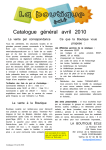

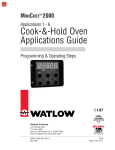

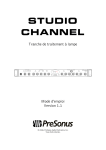

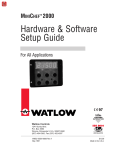
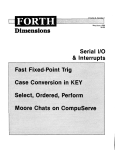
![一括ダウンロード [PDFファイル/276KB]](http://vs1.manualzilla.com/store/data/006680327_3-705d200a828bb338df8a4d4ae2cbad74-150x150.png)
